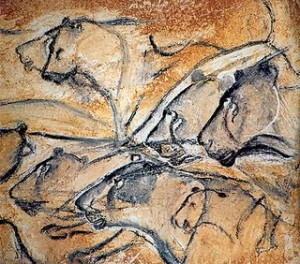One of the main aims of these Mythfire posts is to suggest that much of what we think we know and believe to be true is connected not so much to “truth” and “knowledge” per se but rather to our ego’s need to protect and feel good about itself. However, once we see through ego defenses and suspend our automatic tendency to judge and critique we are forced to acknowledge a heretofore unacknowledged complexity, ambiguity, and richness regarding the human experience. More is unknown than known in terms of who we are, where we’ve come from, and where we’re going. It is ultimately a mystery. In fact, it is the Ultimate Mystery.
No matter how strong a grip the ego has on us this mystery nevertheless makes itself known in ways that can perhaps best be described as holy. Birth, sex, death, nature, love and laughter are a few of the ways something transcendent breaks through and becomes — at least for a moment — powerfully and undeniably immanent. These breakthroughs could be called “soul moments,” and, of course, another portal through which these mysterious moments are soulfully experienced is art.
Take for instance Werner Herzog’s latest film “Cave of Forgotten Dreams.” While watching Herzog’s Wagnerian 3-D documentary film on thirty-two thousand year-old paintings discovered in France’s Chauvet caves in 1994, students of mythology might understandably think of mythologist Joseph Campbell’s writings on the cave paintings in Lascaux. Campbell, who passed away in 1989, would certainly have enjoyed and understood better than most the tremendous mystery on display in the Chauvet caves.
In fact, in this excerpt from his interview with Bill Moyers Campbell calls the caves in Lascaux (and by extension Chauvet) “temple caves”:
Campbell’s calling the caves “temples” brings to mind theologian Paul Tillich’s definition of the related word contemplation: “Con-templation means going into the temple, into the sphere of the holy, into the deep roots of things, into their creative ground.” [2] In this spirit, take a moment to click on and contemplate the four images accompanying this post, keeping in mind that they were painted between fifteen and thirty-two thousand years ago. According to Campbell, for humans living in the Paleolithic era when these paintings were composed, the “deep roots of things” or “creative ground” were closely entwined with the animals that populated the surroundings and offered up their lives to hunters as sustenance. Readers are directed to Campbell’s The Way of the Animal Powers in which he discusses in close succession the Lascaux cave paintings, the cult worship of cave bears, and Venus figures found during this era – all of which are also evident in Herzog’s film on the Chauvet cave.[3]
Or better yet just go see the film and in 3D if you can. That is the best way to get a sense of how the paintings and rock walls merge together to bring the animals to life. Mythfire recently attended a showing with Werner Herzog present for a post-screening Q & A. He closed the evening by stating that the main experience he had been trying to convey through his cinematic vision of the caves was one of “capital A, capital W, capital E.”
Joseph Campbell could not – and would not – have said it any better.
——
 Note: For more information on and images from the Chauvet cave paintings, go to: http://www.ancient-wisdom.co.uk/francechauvet.htm. Also, Wikipedia has a page on the Chauvet cave, (http://en.wikipedia.org/wiki/Chauvet_Cave), as well as one listing other caves with cave paintings, (http://en.wikipedia.org/wiki/Cave_painting). Finally, a very impressive virtual tour of the Lascaux cave passage-ways and their paintings can be found online: http://www.lascaux.culture.fr/#/en/02_01.xmlj. This last site requires a bit of time and patience to learn proper navigation but is certainly worth contemplating.
Note: For more information on and images from the Chauvet cave paintings, go to: http://www.ancient-wisdom.co.uk/francechauvet.htm. Also, Wikipedia has a page on the Chauvet cave, (http://en.wikipedia.org/wiki/Chauvet_Cave), as well as one listing other caves with cave paintings, (http://en.wikipedia.org/wiki/Cave_painting). Finally, a very impressive virtual tour of the Lascaux cave passage-ways and their paintings can be found online: http://www.lascaux.culture.fr/#/en/02_01.xmlj. This last site requires a bit of time and patience to learn proper navigation but is certainly worth contemplating.
——
Next Monday: Reverence for Life
[1] Campbell, Joseph with Bill Moyers. The Power of Myth. Ed. Betty Sue Flowers. New York: Doubleday, 1988: 80.
[2] Irwin, Alexander C. Eros Toward the World: Paul Tillich and the Theology of the Erotic. Minneapolis: Fortress Press, 1991: 93.
[3] Bear worship is discussed beginning on page 54 of The Way of the Animal Powers, Volume I in Campbell’s Historical Atlas of World Mythology. The section on “Temple Caves” and their paintings begins on page 58 and is followed by a section entitled “Symbols of the Female Power,” among which the Venus figures are the most prominent examples. Finally, this last section is followed by one on “The Shamans of the Caves,” which could no doubt provide insight into the painting of the buffalo-shaman that overshadows and even embraces the Venus of Chauvet.





